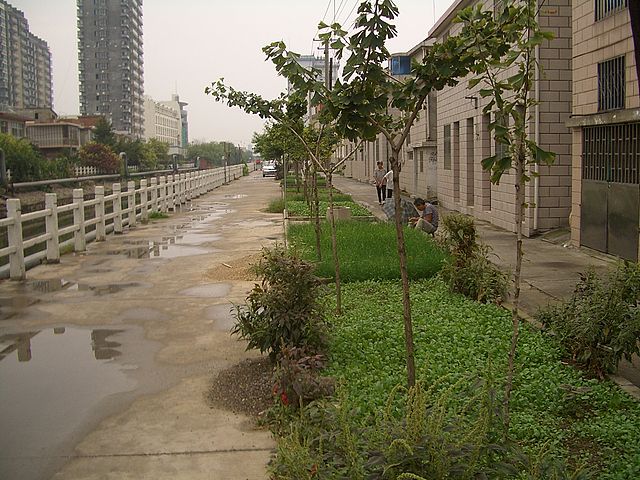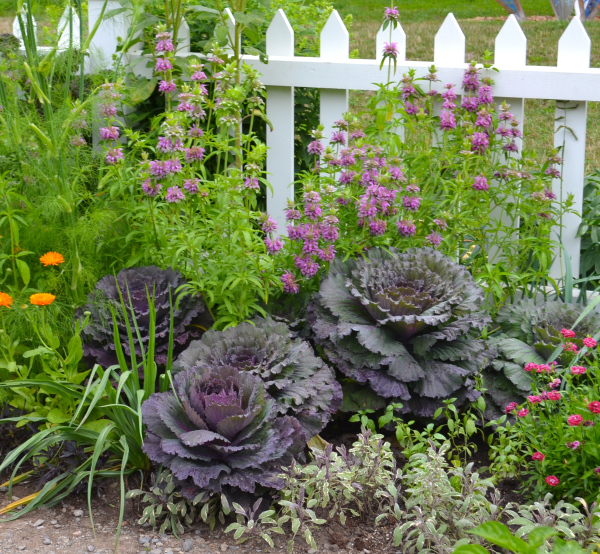
- Inspiring People -
- 5mins -
- 1,671 views
Foodscaping: if you like food and you like gardening, then you’re going to love this!
A hybrid of landscaping and farming, “foodscaping” is a way of creating an integrative landscape that’s not only resourceful because it produces foods that you can eat, but that’s also self-sufficient and low-maintenance.
Foodscaping is the implementation of edible foods into the landscape
Foodscaping, sometimes called edible landscaping or front yard farming, is a type of landscaping in which all or major areas of a lawn on private property or sometimes public property are used to grow food. It has been considered as a hybrid between farming and landscaping in the sense of having an "all-encompassing way of growing a garden, feeding yourself, and making it look pretty" with an "integrative landscape". — Grass and shrubberies are replaced with berry bushes or other plants which yield fruits and vegetables which can mean lower bills at the grocery store. — In contrast to having a backyard vegetable garden or raised bed for flowers or other enclosed or fenced-in space where fruits and vegetables are grown, foodscaping is more extensive, with implementation of edible foods into the landscape.

Foodscaping is a comprehensive way of growing your own food and controlling what you eat
Foodscaping for many around the world is becoming an all-encompassing way of growing a garden, feeding yourself, and making it look pretty, too. Foodscaping is not just planting a raised bed of crops like herbs, tomato plants, or citrus plants in your backyard — it’s a way of creating an integrative landscape, one that is not only resourceful because it produces edible foods, but that also is self-sufficient and low-maintenance. — say The DailyMeal
Foodscaping began as a result of an economic downturn in 2008; a solution to rising food costs and the high prices of landscaping and maintaining a nice looking backyard. Since then, it’s become a comprehensive way of growing your own food and controlling what you eat.
There are plenty of reasons why you would foodscape. For one, it’s environmentally sound. Not only are you cutting down on energy costs from not having to mow your lawn, but you’re avoiding the use of chemically modified products and plants that are the most readily available options at major home and gardening supply stores. With issues like GMOs, pesticides, and quite frankly, poor food choices at local supermarkets, it’s a great solution for taking the reins to control what kind of food you cook and eat. Not to mention, foodscaping is pretty.
There’s a long list of eye-catching plants that add cosmetic value to your landscape and are surprisingly edible. Plants like dogwoods, hostas, service berries, and even Japanese roses are beautiful to look at and they can feed you, too. Last but not least, it’s been scientifically proven that digging your hands into the soil can make you happy. Studies have shown that microorganisms found in the soil can actually release neurotransmitters to the brain that contain serotonin, our brainiac way of saying happiness.
Foodscaping may not be the answer to all of our problems, but it’s a way of changing our culture from one that’s all about consumption and convenience to one that’s patient and more aware of our surroundings.
Foodscaping is food and gardening education from start to finish, and one that it comes at a low labour price for those who choose to practice it. With good design and good practices, you can actually create a landscape that feeds you and that’s also low-maintenance — you don’t have to do a lot of work to keep it going.
It’s times like these when we think that our hunter-gatherer ancestors were onto something, and foodscaping may be an initiative that we all want to pay attention to.
Source: TheDailyMeal

While many in the world are dependent on large scale agriculture, Russians feed themselves
In 2011 the dacha gardens of Russia produced 40% of the nation’s food. A significant portion of the Russian population own “dachas,” or seasonal garden homes, where they can grow their own food. At the height of the communist era, it is reported that these dachas produced 90% of the nation’s food. Today, with the land now privatised, they still comprise about 40% of the nation’s food.
Compare that with the United States, where less than 1% of the population controls the food, and small-scale family farms have for the most part been bought out by huge Biotech corporations.
While many in the world are completely dependent on large scale agriculture, the Russian people feed themselves. Their agricultural economy is small scale, predominantly organic and in the capable hands of the nation’s people. Russians have something built into their DNA that creates the desire to grow their own food. It’s a habit that has fed the Russian nation for centuries. It’s not just a hobby but a massive contribution to Russia’s agriculture.
In 2011, 51% of Russia’s food was grown either by dacha communities (40%), or peasant farmers (11%) leaving the rest (49%) of production to the large agricultural enterprises. But when you dig down into the earthy data from the Russian Statistics Service you discover some impressive details. Again in 2011, dacha gardens produced:
- over 80% of the countries fruit and berries
- over 66% of the vegetables
- almost 80% of the potatoes
- and nearly 50% of the nations milk, much of it consumed raw.
Food sovereignty puts the people who produce, distribute and eat food at the centre of decisions about food production and policy rather than corporations and market institutions that have come to dominate the global food system.
In 2003, the Russian government signed the Private Garden Plot Act into law, entitling citizens to private plots of land for free. These plots range from 0.89 hectares to 2.75 hectares. Industrial agricultural practices tend to be extremely resource intensive and can damage the environment. 70% of global water use goes to farming, and soil is eroded 10 to 40 times faster.
Source: NaturalHomes.org



